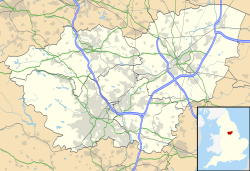| Moorends | |
|---|---|
| Village | |
 Entering Moorends on Marshland Road from Thorne | |
Location within South Yorkshire | |
| Population | 5,500 (2016 DBMC) [1] |
| OS grid reference | SE694152 |
| Civil parish | |
| Metropolitan borough | |
| Metropolitan county | |
| Region | |
| Country | England |
| Sovereign state | United Kingdom |
| Post town | DONCASTER |
| Postcode district | DN8 |
| Dialling code | 01405 |
| Police | South Yorkshire |
| Fire | South Yorkshire |
| Ambulance | Yorkshire |
| UK Parliament | |
Moorends is a village in the north-east of the City of Doncaster, South Yorkshire, England, situated on the border with East Yorkshire and Lincolnshire. It was historically part of the West Riding of Yorkshire until 1974. [2] It is part of the civil parish of Thorne, which lies to the south. [3]
Moorends is located on the edge of Thorne Moors, part of the Humberhead Levels, at an elevation of around 2 metres (6 ft 7 in) above sea level. [4] The moors can be accessed via Grange Road. The village grew up with housing being built to house the miners working in Thorne Colliery, which was developed in the village. [1] Before the coal mine was sunk, the area was largely farmland with only a handful of houses. [5] A missionary church was provided by the owners of the coal mine during the colliery's development (c. 1912, however, a permanent church, St Wilfrith's, was built in 1934, and this became its own parish in 1956. [6]
The legendary goalkeeper Ted Sagar was born in Moorends in 1910. It is also home to one public house.

